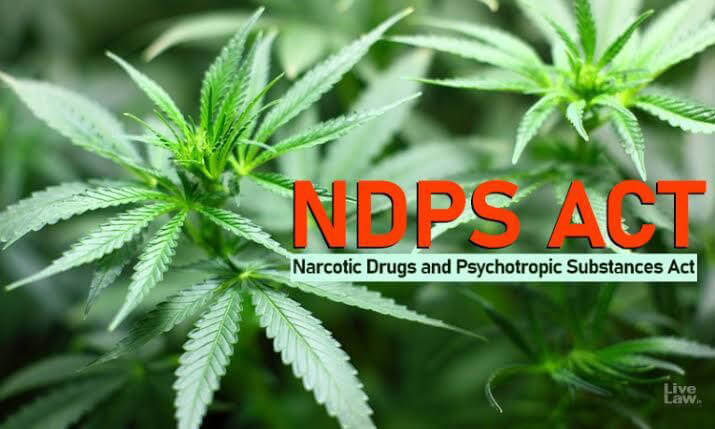
Overview of the NDPS Act (Narcotic Drugs and Psychotropic Substances Act, 1985)
The Narcotic Drugs and Psychotropic Substances (NDPS) Act, 1985 is India’s primary legislation for controlling and regulating narcotic drugs and psychotropic substances. Enacted to combat drug trafficking and abuse, the Act provides stringent provisions for offenses related to the production, possession, sale, transportation, and consumption of narcotic and psychotropic substances.
Key Features of the NDPS Act
- Prohibition and Regulation
- The Act prohibits the production, manufacture, possession, sale, purchase, transport, warehousing, and consumption of narcotic drugs and psychotropic substances, except for medicinal or scientific purposes under government supervision.
- It regulates licit (legal) cultivation and production of certain substances, such as opium and cannabis, for medical and scientific purposes.
- Classification of Substances
The Act categorizes drugs into two main types:
- Narcotic Drugs – Opium, Heroin (diacetylmorphine), Cannabis (Marijuana, Hashish), Cocaine, etc.
- Psychotropic Substances – MDMA, LSD, Methamphetamine, Amphetamines, and others listed under the Act.
- Stringent Punishments
The Act prescribes strict penalties based on the quantity of the substance involved in the offense:
- Small Quantity (e.g., 1g heroin, 100mg LSD) – Up to 1 year imprisonment or fine or both.
- Intermediate Quantity – Punishment varies based on the case.
- Commercial Quantity (e.g., 250g heroin, 2kg opium) – Minimum 10 years imprisonment, extendable to 20 years, plus a fine up to ?2 lakh or more.
- Preventive Detention & Bail Restrictions
- The Act allows for preventive detention of repeat offenders.
- Bail provisions are strict, and in most cases, bail is denied unless the court is satisfied that the accused is not guilty and will not commit the offense again.
- Death Penalty for Repeat Offenders
- For a second conviction in commercial quantity trafficking, courts can award the death penalty under Section 31A.
- Treatment and Rehabilitation
- Recognizing addiction as a disease, the Act provides for rehabilitation and de-addiction programs.
- First-time users may be sent to rehabilitation instead of facing imprisonment.
- Powers of Law Enforcement Agencies
- The Act grants extensive powers to Central and State agencies, including the Narcotics Control Bureau (NCB), police, and customs officers, to seize drugs and arrest offenders.
- Section 42 allows officials to conduct search and seizure operations without a warrant in urgent cases.
- International Obligations
- The NDPS Act aligns India’s drug laws with international conventions, such as the UN Single Convention on Narcotic Drugs, 1961, and the Convention on Psychotropic Substances, 1971.
Recent Amendments and Developments
1.NDPS (Amendment) Act, 2014
- Allowed medical use of narcotic drugs.
- Increased punishment for repeat offenders.
- NDPS Amendment Bill, 2021
- Addressed a loophole in the 2014 amendment related to criminal liability for drug possession.
- Judicial Developments
- Courts have interpreted “conscious possession” strictly, ensuring innocent individuals are not penalized.
- The Bombay High Court ruled that consumption without possession is not an offense under the Act.
Criticism and Challenges
- Harsh Punishments: Critics argue that strict penalties, including for small quantities, disproportionately impact users rather than traffickers.
- Bail Provisions: The stringent bail conditions make it difficult for undertrials to secure release.
- Overcrowding in Prisons: A significant number of prisoners in India are held under NDPS charges, contributing to prison overcrowding.
- Implementation Issues: Corruption and misuse of power by law enforcement agencies have led to wrongful arrests and harassment.
replique montre
Conclusion
The NDPS Act, 1985 is a crucial law in India’s fight against drug trafficking and substance abuse. While it has helped curb drug-related crimes, critics argue for more balanced reforms, particularly in distinguishing between users and traffickers, making bail provisions less harsh, and focusing on rehabilitation over punishment for minor offenses.
By Manmeet Kaur
4th year, B.A. LL.B
Ideal Institute Of Management And Technology ( Affiliated to GGSIP University , New Delhi)
